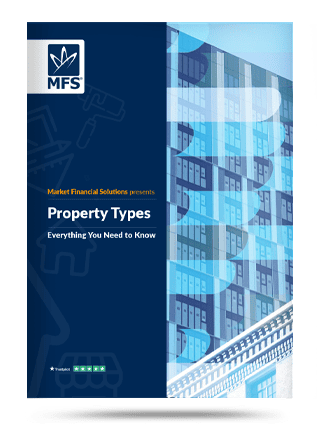Market Financial Solutions are a bridging loan and buy-to-let mortgage provider and are not legal, financial, investment or tax advisers. This document is for informational purposes only and does not, and should not be considered, to constitute legal, financial, investment or tax advice or be relied upon by any person to make a legal, financial, investment or tax decision. Therefore, Investors are encouraged to seek appropriate professional advice. The information in this content is correct at time of writing.

Co-living spaces, while still in their infancies, are emerging as exciting new opportunities in the property market. Co-living spaces – or schemes, developments etc – are purpose-built and managed residential developments for rent, which include a combination of personal and shared amenity space[1].
Popular with students and young professionals[2], co-living spaces differ from traditional HMO properties, but they can be thought of as largescale HMO spaces.
London has emerged as the co-living capital of the UK. A well-known example includes The Collective Old Oak[3] in North Acton, that features all inclusive bills, a spa, gym membership and “cultural events” such as a pasta making masterclass, and a graffiti workshop.
The Ark in Canary Wharf[4] is another key location. On top of offering various types of studio flats, a pool, library, and co-working space are also available.
Developments in the Market
While they’re yet to be widespread across the UK, at least in comparison to other forms of rental properties or developments, co-living spaces are coming to the forefront of the market rapidly. Some 2,500 co-living units were completed in 2023. This was a 65% rise on the prior year, taking the total to just over 7,500[5].
Moreover, investment activity has also ramped up. Nearly £1bn has been spent on developments since 2020, while some 45% of institutional investors have indicated plans to invest in this asset class by 2028.
Most co-living spaces are found in London, but developments are spreading. Looking ahead, Birmingham, Bristol, Coventry, Leeds, Reading, Sheffield and Southampton all explicitly and positively reference co-living in their local authority policy development plans[6].13,483 co-living units are also currently under construction or have planning permission granted[7].

Future Opportunities
Still, even with all these developments, there is a lot of potential on the horizon. The supply of co-living spaces has been rising, but it’s still not meeting demand. In London alone, there’s believed to be a market for co-living spaces to the tune of 600,000 beds[8]. Supply however, is forecast to reach just 11,500 beds by 2027.
The momentum is there, but there is plenty of scope for scaled up activity. Developers and property investors may be able to offer their support here.
The number of operational co-living homes in the UK rose to 7,540 in 2023, a fivefold increase since 2019. Impressive numbers, but this accounts for just 0.4% of the potential target market, according to Knight Frank[9].
Specialist Finance’s Role for Co-living Spaces
Much of the opportunity here sits with developers and institutional investors. Indeed, institutional investors currently own over £75bn in living sector assets, with plans to invest further over the coming years. Knight Frank argues this suggests that existing investors view co-living as a means to capture a more varied tenant base, and diversify their portfolios.
This doesn’t mean there aren’t incentives for individual property investors or landlords. According to Mortgage Finance Brokers[10], more property investors and mortgage lenders are considering co-living spaces due to the success seen in the built-to-rent sector. This is important to note, considering that co-living properties can offer high rental yields.
There are also other ways to enter this lucrative, potential-filled market. Underutilised properties can be converted and/or extended to accommodate new co-living spaces. Our permitted & light development bridging loans can help here.
To illustrate – a new co-living development is set to be built opposite the Barbican Estate in London, which may “transform” the Square Mile[11]. So long as the approved plans go ahead, the existing building at 45 Beech Street will be partially demolished and then extended to create 174 private rental units with communal cooking, dining, and working areas, according to the BBC.
Also, while we do not offer ground-up development finance, we do provide development exit finance for those coming to the end of a major project. Where co-living developers need to cover an initial development finance loan, or find breathing space to wrap everything up, we may be able to offer reprieve.
Across our products, we’re open to a range of property types, unusual circumstances, or complex corporate structures. As new avenues for opportunity open up, we’ll be there for expanding investors.

The Complete Guide to
Property Types
Everything you need to know
- Residential property types
- Commercial property types
- Property types by ownership
- Property types by investment goal
- Regional variations & more
[1] https://www.savills.co.uk/services/investment/co-living.aspx
[2] https://www.mfbrokers.co.uk/resources/blogs/should-landlords-consider-co-living-developments
[3] https://www.thecollective.com/locations/old-oak
[4] https://arkcoliving.com/locations/canary-wharf
[5] https://btrnews.co.uk/the-rise-of-the-uk-co-living-sector/#:~:text=Nearly%202%2C500%20new%20co%2Dliving,%2C%20community%2Doriented%20housing%20options
[6] https://lichfields.uk/blog/2024/july/01/co-living-build-to-rent-s-little-brother-is-on-a-familiar-planning-journey
[7] https://content.knightfrank.com/research/2854/documents/en/co-living-report-2024-11304.pdf
[8] https://btrnews.co.uk/demand-for-co-living-surpasses-supply/
[9] https://btrnews.co.uk/uk-co-living-sector-sees-rapid-growth-as-investor-interest-surges/
[10] https://www.mfbrokers.co.uk/resources/blogs/should-landlords-consider-co-living-developments
[11] https://www.bbc.co.uk/news/articles/cjdkdvzdjmxo





